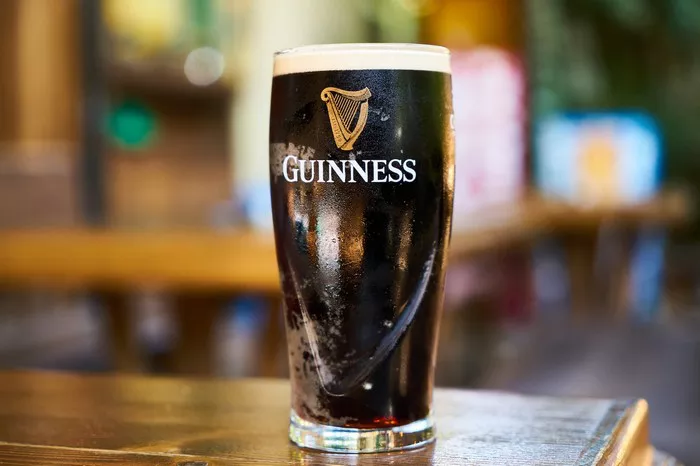In the realm of beverages that have shaped cultures and societies for centuries, few hold the iconic status of beer. This beloved libation, crafted through the artistry of fermentation, is often enjoyed for its diverse flavors, textures, and aromas. However, the question of how much alcohol is actually present in a bottle of beer is a vital one for those seeking to enjoy this beverage responsibly. In this comprehensive exploration, we delve into the intricacies of alcohol content in beer, shedding light on the factors that influence it and unraveling the math behind the percentages.
The Craft of Brewing: A Symphony of Ingredients
1. The Alchemy of Fermentation
Beer, the result of a magical transformation, is born from the fermentation of four primary ingredients: water, malted barley, hops, and yeast. During the brewing process, yeast consumes sugars present in the malted barley, producing alcohol and carbon dioxide as byproducts. The amount of alcohol generated is a pivotal determinant of a beer’s potency.
2. The Role of Yeast
Yeast, often referred to as the “magician” of brewing, is a living microorganism responsible for the conversion of sugars into alcohol. Different strains of yeast exhibit varying fermentation characteristics, influencing the flavor profile and alcohol content of the final brew.
Measuring Alcohol Content: Percentage by Volume (ABV)
1. Understanding ABV
Alcohol content in beer is typically measured as a percentage by volume, commonly abbreviated as ABV. This numerical representation indicates the proportion of alcohol in a given volume of beer. For example, a beer with an ABV of 5% contains 5% alcohol and 95% other liquid components.
2. Calculating ABV
The calculation of ABV involves comparing the original gravity (OG) of the beer (which measures the density of the liquid before fermentation) with the final gravity (FG) of the beer (which measures the density of the liquid after fermentation). By subtracting the FG from the OG and performing a series of calculations, brewers can determine the alcohol content.
Variability in Alcohol Content: Factors at Play
1. Beer Styles
Different beer styles exhibit varying ABV ranges. Lighter styles, such as session ales and lagers, typically have lower alcohol content, often ranging from 3% to 4.5% ABV. In contrast, stronger styles, including imperial stouts, barleywines, and Belgian ales, can boast ABV percentages exceeding 10% and even reaching into the high teens.
2. Brewing Techniques
Brewing techniques can influence alcohol content. For instance, “double” or “triple” brewing involves multiple mashing processes to extract as much sugar as possible from the malt, resulting in higher alcohol concentrations.
3. Ingredients and Yeast Selection
The choice of ingredients, particularly the type and quantity of malt, can impact alcohol content. Additionally, the selection of yeast strains can influence fermentation efficiency and the production of alcohol and other flavor compounds.
4. Fermentation Time
Longer fermentation periods can lead to higher alcohol content, as yeast has more time to convert sugars into alcohol. Conversely, shorter fermentation times may result in lower ABV.
Labeling and Interpretation: What the Numbers Mean
1. Reading the Label
When examining a bottle of beer, the ABV is often prominently displayed on the label. This percentage provides valuable information about the beer’s potency and can guide consumers in making informed choices based on their preferences and tolerance levels.
2. ABV and Flavor
ABV can offer insights into a beer’s flavor profile. Beers with higher alcohol content may exhibit more intense and complex flavors, while those with lower ABV may emphasize drinkability and refreshment.
3. Responsible Consumption
Understanding the ABV of a beer is integral to responsible consumption. Being aware of the alcohol content allows individuals to pace themselves, make informed decisions, and prioritize safety.
Calculating Alcohol Content: A Simple Equation
1. The Formula
Calculating alcohol content in a bottle of beer involves a straightforward equation:
ABV = (Alcohol in grams / Total volume in milliliters) × 100
2. Example Calculation
Let’s say we have a 12-ounce (355-milliliter) bottle of beer with an ABV of 5%. To calculate the alcohol content:
Alcohol in grams = (ABV × Total volume in milliliters) / 100
Alcohol in grams = (5 × 355) / 100 = 17.75 grams
Now, using the formula for ABV:
ABV = (17.75 grams / 355 milliliters) × 100 = 5%
This calculation confirms that the beer has an ABV of 5%, as indicated on the label.
Context and Enjoyment: A Holistic Perspective
1. Quality over Quantity
While understanding alcohol content is essential, quality and enjoyment should take precedence. Savoring the flavors, aromas, and craftsmanship of a well-brewed beer enriches the experience.
2. Responsible Choices
Moderation and responsible consumption are fundamental. Knowing one’s limits, staying hydrated, and consuming food alongside beer can contribute to a balanced and enjoyable drinking experience.
3. Variety and Exploration
Exploring beers of varying ABV allows individuals to discover a wide spectrum of flavors and styles. From sessionable ales to robust stouts, each beer offers a unique journey of taste and sensation.
In Conclusion
As beer enthusiasts raise their glasses in celebration, understanding the alcohol content in a bottle of beer adds a layer of appreciation to the experience. The interplay of ingredients, brewing techniques, and yeast alchemy culminates in a liquid masterpiece that carries both flavor and tradition. By unraveling the science behind ABV and embracing responsible consumption, beer enthusiasts can embark on a journey of taste, culture, and camaraderie, savoring each sip with a blend of knowledge and enjoyment. Cheers to the captivating world of beer and the artistry that resides within each bottle!


